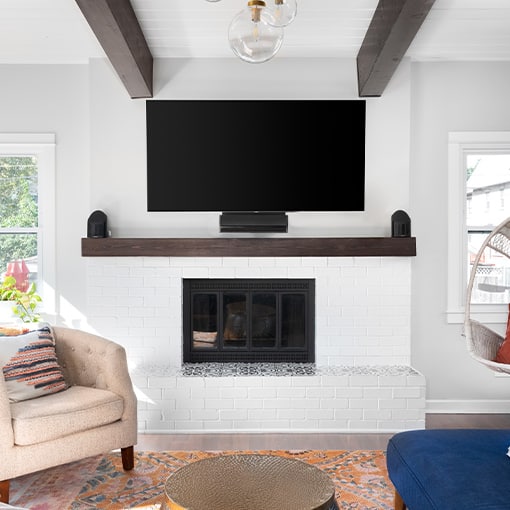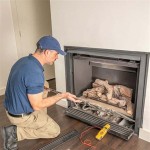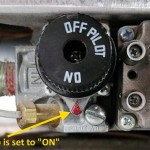Mounting a Flat Screen TV on a Brick Fireplace: A Comprehensive Guide
Mounting a flat screen television above a fireplace, particularly one constructed of brick, is a popular design choice. It can maximize space utilization, create a focal point in the room, and enhance the viewing experience. However, this installation presents unique challenges that require careful planning, the right tools, and a solid understanding of structural considerations. This article provides a detailed guide to ensure a safe and aesthetically pleasing installation.
Assessing the Feasibility and Potential Challenges
Before commencing any installation, a thorough assessment of the fireplace and surrounding area is paramount. This involves evaluating several factors, including the type of brick, the condition of the mortar, the available space, and the potential for heat exposure. Ignoring these preliminary steps can lead to structural damage, electrical hazards, and ultimately, an unsatisfactory outcome.
The type of brick used in the fireplace construction is a critical consideration. Different types of brick possess varying levels of density and hardness. Softer bricks are more susceptible to cracking and crumbling when drilled, making it more difficult to achieve a secure anchor. Harder bricks, while more durable, require specialized drill bits and more significant effort to penetrate. Furthermore, the mortar joints between the bricks play a crucial role in the overall stability of the structure. Deteriorated or weak mortar can compromise the integrity of the mounting system and lead to the television detaching from the wall.
Space constraints and viewing angles are also important to consider. The distance between the seating area and the fireplace, as well as the height of the mantel, will determine the optimal size of the television and its placement. A television mounted too high can cause neck strain, while one that is too small may not provide an adequate viewing experience. It is advisable to simulate the viewing experience with a mock television to assess the ergonomics before proceeding with the actual installation.
Heat exposure is a significant factor that cannot be overlooked. Fireplaces generate substantial heat, which can damage sensitive electronic components within the television. Prolonged exposure to high temperatures can shorten the lifespan of the television, degrade image quality, and even pose a fire hazard. It is essential to measure the temperature of the brick surface above the fireplace while it is in operation to determine whether a heat shield or other protective measures are necessary. A general rule of thumb is to maintain a minimum of 12 inches of clearance between the top of the fireplace opening and the bottom of the television, but this distance may need to be increased depending on the intensity of the heat.
Selecting the Right Tools and Materials
The success of a flat screen television installation on a brick fireplace hinges on using the appropriate tools and materials. Attempting to use inadequate or unsuitable equipment can lead to frustration, damage, and potentially dangerous outcomes. Investing in high-quality tools and materials is a worthwhile investment in ensuring a secure and professional-looking installation.
A hammer drill is indispensable for drilling into brick. Unlike standard drills, hammer drills use a percussive action to pulverize the brick, allowing the drill bit to penetrate more easily. A rotary hammer drill, which combines rotation and hammering action, is even more effective for drilling into hard brick. It is important to use drill bits specifically designed for masonry. Carbide-tipped drill bits are ideal for drilling into brick, as they are extremely durable and can withstand the abrasive nature of the material. Select a drill bit size that corresponds to the diameter of the concrete anchors you will be using.
Concrete anchors are used to securely fasten the television mount to the brick wall. These anchors expand when a screw is inserted, providing a strong and reliable hold. There are several types of concrete anchors available, including sleeve anchors, wedge anchors, and tapcon screws. The choice of anchor will depend on the type of brick, the thickness of the mortar joints, and the weight of the television. Sleeve anchors are generally recommended for brick fireplaces, as they provide a large bearing surface and are less likely to damage the brick. Tapcon screws are another option, but they require precise drilling and may not be suitable for softer bricks. It is crucial to select anchors that are rated to support the weight of the television and the mount, with a generous safety margin.
A stud finder is useful for locating the wooden studs behind the drywall on either side of the fireplace. While the television will be mounted to the brick, the surrounding studs can be used to route cables and conceal them behind the wall. A level is essential for ensuring that the television is mounted straight and level. A laser level can be particularly helpful for this purpose. A measuring tape is needed for accurately determining the placement of the television and the mounting holes. Safety glasses and a dust mask are crucial for protecting your eyes and lungs from debris generated during drilling. A wire stripper and wire connectors are needed for connecting the television to the power supply and cable box. A cable management system, such as cable ties, cable clips, or a cable raceway, can be used to organize and conceal the cables behind the television.
A television mount specifically designed for brick walls is essential. These mounts are typically more robust than standard mounts and are designed to accommodate the uneven surface of the brick. Consider a full-motion mount if you want the ability to adjust the viewing angle of the television. A tilt mount allows you to tilt the television up or down to improve the viewing angle. A fixed mount is the simplest and most affordable option, but it does not offer any adjustment capabilities.
Steps for Installation
Once the feasibility has been assessed and the necessary tools and materials have been gathered, the installation process can begin. Precision and attention to detail are paramount to ensure a secure and aesthetically pleasing result. The following steps provide a detailed guide to the installation process.
The first step is to mark the desired location of the television on the brick wall. Use a level to ensure that the television will be mounted straight and level. Consider the viewing distance, the height of the mantel, and any other factors that may affect the optimal placement of the television. Once you have determined the desired location, use a pencil to mark the center point of the television on the wall. Hold the television mount against the wall and align it with the center point. Use a pencil to mark the location of the mounting holes on the brick. Make sure that the mounting holes are positioned within the mortar joints, rather than on the brick itself. Drilling into the mortar joints is less likely to damage the brick and provides a more secure anchor.
Using a hammer drill and a masonry drill bit, drill pilot holes at the marked locations. Drill slowly and steadily to avoid cracking the brick. If you encounter resistance, try using a smaller drill bit to start the hole. Drill the holes to the depth specified by the anchor manufacturer. Clean out any dust and debris from the holes using a vacuum cleaner or compressed air. Insert the concrete anchors into the pilot holes. Use a hammer to gently tap the anchors into place until they are flush with the surface of the brick. Attach the television mount to the brick wall using screws. Tighten the screws securely, but do not overtighten them, as this could damage the brick or the anchors.
Carefully lift the television and attach it to the mount. Ensure that the television is securely attached to the mount before releasing it. Connect the cables to the television, including the power cable, HDMI cables, and any other necessary cables. Route the cables behind the wall using a cable management system. This will help to keep the cables organized and concealed. Use a stud finder to locate the wooden studs behind the drywall on either side of the fireplace. Drill holes through the drywall and into the studs. Feed the cables through the holes and behind the wall. Attach a cable raceway to the wall to conceal the cables. A cable raceway is a plastic or metal channel that covers the cables and keeps them out of sight. Connect the other end of the cables to the power supply, cable box, and other devices. Turn on the television and test the picture and sound quality. Adjust the viewing angle of the television as needed. Make any necessary adjustments to the cable management system to ensure that the cables are neatly organized and concealed.
Addressing Potential Heat Concerns
As previously mentioned, heat generated by the fireplace can pose a significant threat to the longevity and performance of the television. Implementing proactive measures to mitigate heat exposure is crucial for ensuring the television's reliability and preventing potential damage.
Measuring the surface temperature of the brick above the fireplace while the unit is in operation is a fundamental step. This can be accomplished using an infrared thermometer. Take readings at various points on the brick surface, paying particular attention to the area directly above the fireplace opening. If the temperature exceeds the manufacturer's recommended operating temperature for the television, additional steps are necessary.
Installing a mantel shelf can deflect heat away from the television. The shelf acts as a barrier, preventing heat from rising directly towards the television. The size and depth of the mantel shelf will depend on the size of the fireplace and the amount of heat it generates. A wider and deeper shelf will provide better heat deflection. Constructing a heat shield is another effective method for protecting the television from heat. A heat shield can be made from metal or other heat-resistant materials. Attach the heat shield to the wall above the fireplace, ensuring that it extends far enough to cover the entire television. Ensure proper ventilation around the television. Do not block the vents on the back of the television, as this can trap heat and cause the television to overheat. Use a fan to circulate air around the television. This will help to dissipate heat and keep the television cool.

How To Mount Tv On Brick Fireplace Wall Step By The Men

How To Mount A Tv Over Brick Fireplace And Hide The Wires Designing Vibes Interior Design Diy Lifestyle

How To Mount A Tv On Brick Fireplace 7 Straightforward Steps

Flat Screen Tv Mounting Over Brick Fireplace South Hampton Ny

Can I Mount My Tv Above The Fireplace

Can I Mount My Tv Above The Fireplace

Flat Screen Tv Over Fireplace Designs

Your Tv Doesn T Belong Over The Fireplace Cnet

Tv Mounting Over A Brick Fireplace With Wires Concealed In Wire Molding S

How To Mount A Tv On Brick Fireplace 7 Straightforward Steps
Related Posts








